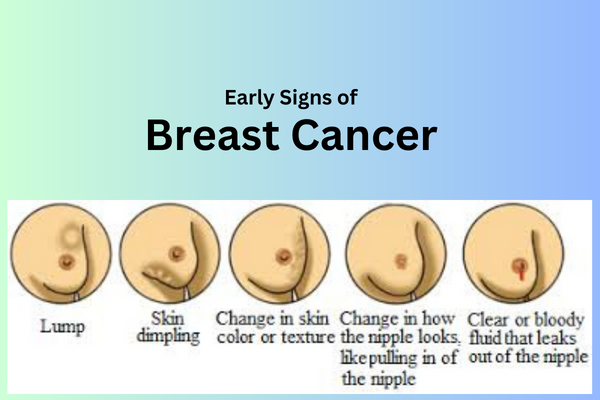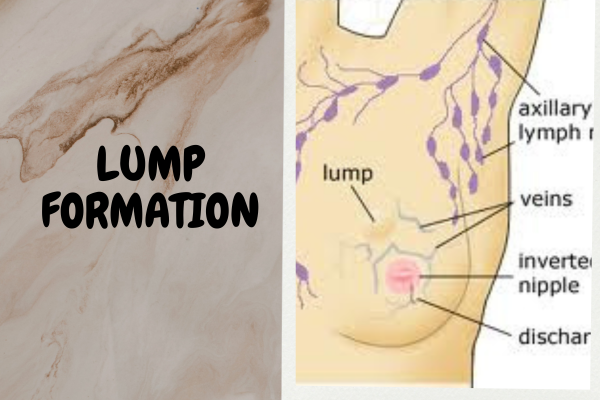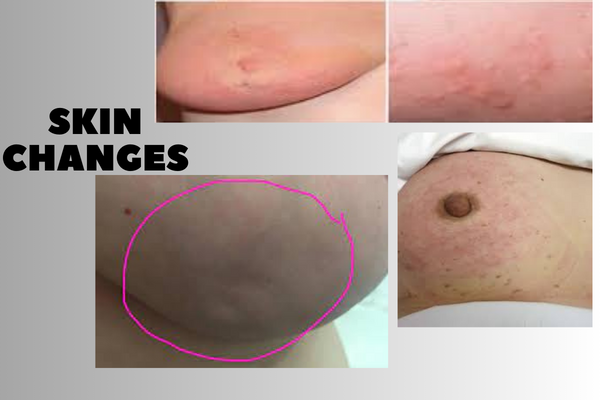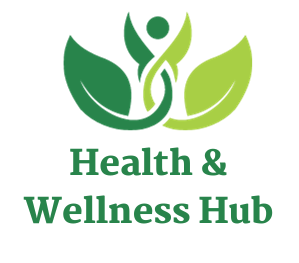
Table of Contents
ToggleIntroduction
Breast cancer remains a pervasive and life-altering disease that affects millions of women worldwide. One of the key factors in successfully treating breast cancer is early detection. Recognizing the signs and symptoms of breast cancer can significantly improve the chances of survival. In this blog post, we will explore the early signs of breast cancer through pictures, helping readers understand what to look for and encouraging regular self-examinations and screenings.
1. Lump Formation

The most common early sign of breast cancer is the formation of a lump or mass in the breast tissue. These lumps are usually painless and can be felt during self-examinations or noticed accidentally. It’s crucial for women to perform regular breast self-exams to familiarize themselves with the normal texture of their breasts, making it easier to detect any unusual changes.
2. Changes in Breast Size, Shape, or Appearance
Breast cancer may cause noticeable changes in the size, shape, or appearance of the breast. This can include swelling, dimpling, or puckering of the skin. In some cases, the affected breast might appear larger or lower than the other.
3. Nipple Abnormalities
Nipple changes may indicate a possibility of breast cancer. These changes may include nipple tenderness, inversion (nipple turning inward), discharge other than breast milk, or changes in texture, such as scaly or rash-like skin around the nipple.
4. Breast Pain
While breast pain is more commonly associated with benign conditions, persistent discomfort or tenderness in the breast or nipple area should not be ignored. Women experiencing unexplained breast pain should consult a healthcare professional for a proper evaluation.
5. Skin Changes

Breast cancer can cause various skin changes on the breast surface. Redness, warmth, or dimpling resembling the skin of an orange (referred to as peau d’orange) can be indicative of underlying issues and should be examined promptly.
6. Unexplained Weight Loss
Unintentional weight loss is a symptom that is often overlooked but can be an early sign of breast cancer. If a person experiences sudden and unexplained weight loss, it’s essential to consult a healthcare provider to rule out any underlying health concerns, including cancer.
7. Swollen Lymph Nodes
Breast cancer can spread to nearby lymph nodes, causing them to swell. While swollen lymph nodes can be caused by various conditions, if the swelling is persistent and not related to an infection, it should be evaluated by a healthcare professional.
Conclusion
Understanding the early signs of breast cancer is vital for timely detection and successful treatment. Regular self-examinations, combined with routine mammograms and clinical breast exams, are essential in catching breast cancer in its early stages when it is most treatable. It’s equally important for individuals to be aware of their family medical history and engage in open conversations with healthcare providers about their breast health. By staying vigilant and proactive, we can collectively reduce the impact of breast cancer and save lives.

